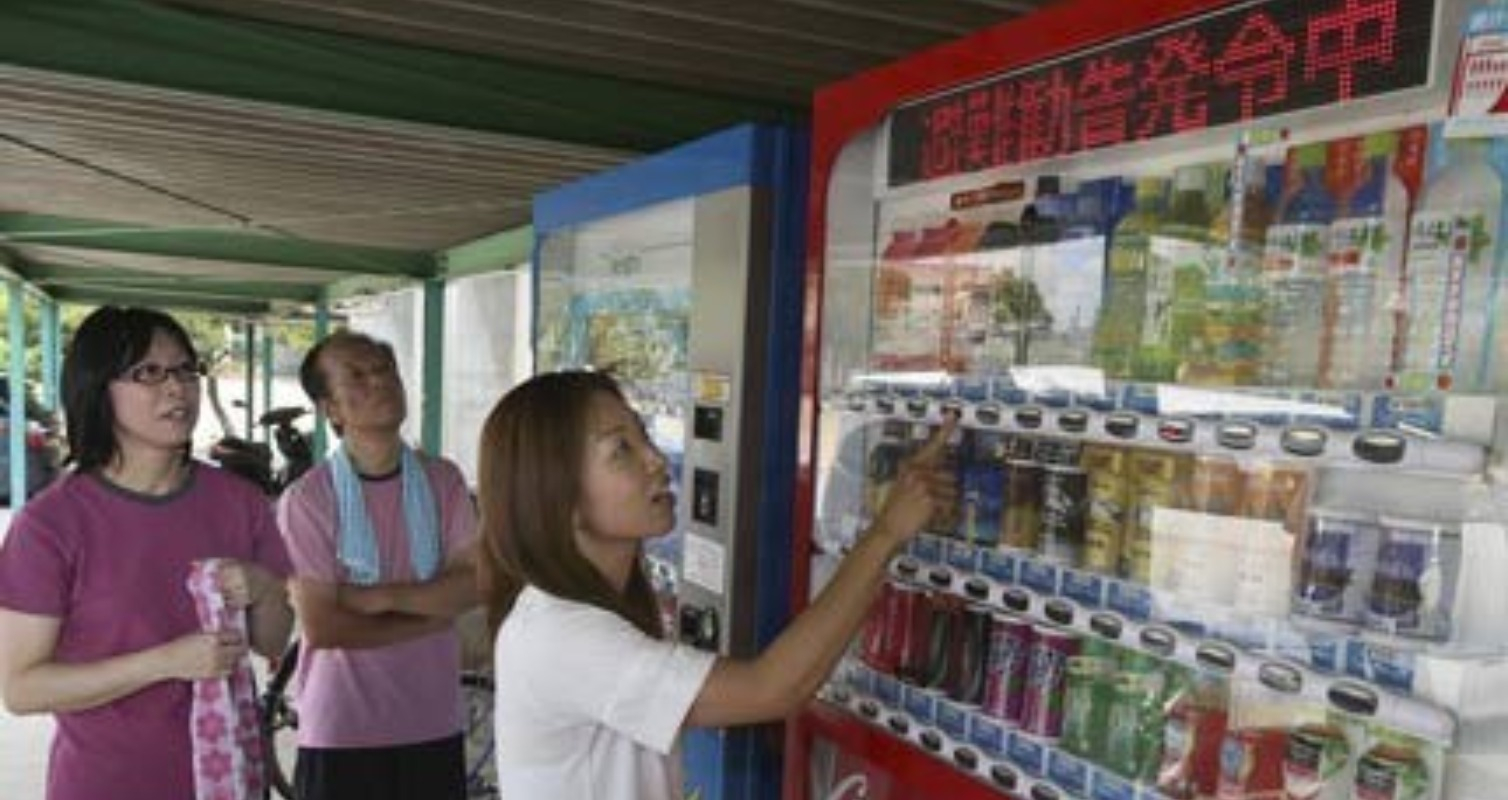Vending machines designed to help people survive disasters through providing beverages for free and displaying emergency bulletins have been increasing since the 2011 Great East Japan Earthquake.
The trend is a combination of local municipalities’ need to increase their emergency stockpiles at lower costs and the desire among beverage makers to enhance their corporate image through social contributions.
When the Great East Japan Earthquake hit on March 11, 2011, Coca-Cola Japan Co. employs the remote control functions on about 400 disaster-relief vending machines with backup batteries in the Tokyo metropolitan area and other locations.
The Tokyo-headquartered company offered more than 88,000 of its beverages for free to people who had difficulty returning home in the aftermath of the disaster.
The company said it later received words of gratitude such as, “It was nice to get a hot drink for free in such a cold situation.”
In many cases, the machines are installed at schools and gymnasiums used as evacuation centers, based on disaster assistance agreements between local governments and beverage makers.
Yoshiteru Murosaki, a professor emeritus at Kobe University and expert on urban planning for disaster mitigation, said:
Disaster-relief vending machines are useful not only for stockpiling beverages, but also for raising the disaster-prevention awareness of residents who see the machines regularly. Companies and local governments should cooperate to keep installing more similar machines.
Yoshiteru Murosaki

